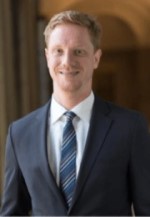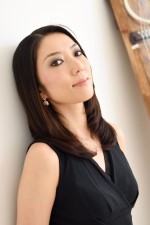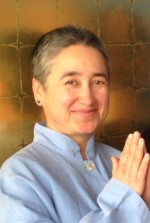 Powerful characters
Organic flow
Strong and wild sounds
What a three year old knows
Powerful characters
Organic flow
Strong and wild sounds
What a three year old knows
Move your cursor to explore different voices about the artwork
Bo Juyi questions Zen Master Bird’s Nest
Ikkyū Sōjun (1394–1481)
Japan, Muromachi period, early–late 15th century
Hanging scroll; ink on paper
The Mary and Cheney Cowles Collection, Gift of Mary and Cheney Cowles
Freer Gallery of Art, Gallery 6a
F2019.3.7a-g
On your phone:
Click on the different “searchlights” in the interactive to explore the individual responses to the artwork. You can also zoom in on the artwork and view its details.
On your PC:
Use the spotlight to discover points of interest in the artwork. Click on the points to explore the individual responses to the artwork. You can also zoom in on the artwork and view its details.
Narrator (00:01):
Find out more about the artist who created this work with curator Frank Feltens.
Frank Feltens (00:07):
The Zen monk Ikkyū who made this calligraphy was one of the stars of Zen, if you will. And one of the reasons for that is his really emphatically idiosyncratic and untrammeled behavior. Ikkyū was said to have been born into nobility but then entered the Zen temple Daitokuji in Kyoto and displayed—shunned the monastic norms, refused to shave his hair, grew a bearded stubble, engaged in sexual relations with people outside the monastery—something that you’re not supposed to do at all—drank. He did all these things that you were not supposed to do when you were a Buddhist monk. But because Zen is such a religion, an interpretation of Buddhism, that really emphatically shuns these types of norms and really goes against the flow, for lack of a better word, Ikkyū became one of its paragons, and his untrammeled behavior and his idiosyncratic being is really reflected in his calligraphy. And his calligraphy has been cherished over centuries in Japan.
Frank Feltens (01:22):
Ikkyū lived in the early fifteenth to late-fifteenth century, and this is when this work here was probably made. But over the centuries, up until our own time, Ikkyū’s powerful calligraphy has been cherished among Japanese collectors, in particular, in tea circles in Japan. All throughout the Edo period, Ikkyū’s calligraphies were the highly prized—the most highly prized works to adorn a tea ceremony, for example. And there is a reason why Ikkyū’s calligraphy was so popular and so sought after. And all those reasons are very nicely and very much embodied in this work here that displays a famous quote by Ikkyū between a conversation between Bo Juyi, a Tang Dynasty poet, and a Zen master named Bird Nest. And I’m just going to read you quickly what the calligraphy says in English. And the translation here was done by Sonja Arntzen.
Frank Feltens (02:23):
Bo Juyi asked master Bird Nest, “What is the broad meaning of Buddhism?” Bird Nest answered, “Do no evil, do much good.” Bo Juyi said, “But a three-year-old child could understand a teaching like this.” Bird Nest replied, “A three-year-old child may be able to say it, but there are eighty-year-old men who cannot practice it.”
Frank Feltens (02:45):
And this famous quote from Ikkyū’s anthology, the Mad Cloud anthology, is wonderfully captured here. In every line you read Japanese calligraphy from right to left, every line sort of emphasizes further and further and key passages of this conversation between Bo Juyi and Bird Nest, and Ikkyū is taking up steam as he continues to write this conversation down onto the paper. So, take the first line on the far right. It ends with “Do no evil.” Every character is pretty much carefully shaped and enunciated, but then the second line, the first punchline of this conversation, “Do much good,” is already very much more powerful than the carefully written characters in the first line and really emphasizes visually this very important part of the conversation. And then as it goes on and Bird Nest’s very final sentence in response to Bo Juyi is done in incredibly powerful, bigger characters where Ikkyū is clearly pouring a lot of his energy into emphasizing that most important part of the conversation, that a three-year-old child may be able to say these things, but even an eighty-year-old, a very old person with a lot of knowledge and a lot of experience, may not be able to practice it.
Frank Feltens (04:17):
So Ikkyū reminds us that calligraphy speaks through its form as much as it speaks through the words it says. And I hope you can appreciate with us the power of Ikkyū’s words here.

Frank Feltens is the Japan Foundation Associate Curator of Japanese Art at the National Museum of Asian Art. He is a specialist in Japanese art with a focus on the late medieval and early modern periods, including Japanese photography and the intersections between painting and ceramics. He is co-curator of the exhibition Mind over Matter: Zen in Medieval Japan.
Narrator (00:01):
Penelope Morris and Akesh Mallia, high school students from Washington, DC, imagine how the artist created this work of calligraphy.
Akesh Mallia (00:09):
Some of the characters are bigger than others. They're not in straight lines and they're kind of disorganized, I would say.
Penelope Morris (00:16):
The character size is pretty inconsistent, and it almost looks like a completely different brush was used to write. Some of the characters, like the ones on the right, are really small, and they get bigger over to the left.
Akesh Mallia (00:27):
I don't know exactly what it's saying, but it might be to emphasize certain things. I feel like it was very quickly drawn, that yeah, it's not as organized as some others.
Penelope Morris (00:40):
Also, I don't know if this would be the right word, but it looks very organic and sincere like it's not some official document. It looks like it could be some type of poetry.
Akesh Mallia (00:51):
Yeah. I would agree with that.
Penelope Morris (00:53):
Well, I know a lot of the art that we looked at last time was about nature, like that landscape, so maybe it has something to do with nature. Well, it follows the art in this exhibit. It's like Zen Buddhist art, or at least Zen Buddhism in some way, then maybe nature is a common theme throughout all of that.
Akesh Mallia (01:12):
Yeah. Also like you said earlier, it looks organic, and it flows from one place to another in some way, even though if it's not straight lines, it still does manage to flow. I think it's organic and that it might show natural qualities as well, like a river or something like that. I think in this piece of art, there's some parts that are consistently bigger and look different as in that they have thicker lines and stuff so knowing that it's a dialogue. You represent the thicker lines being one person and the thinner characters being another person in the dialogue.

High School Students from Globalize DC shared their perspectives with the museum. This program focuses on increasing access for DC’s public school students to high quality global education, language learning, and study abroad opportunities. Globalize DC reduces barriers to access for underserved students and schools, supporting sustainable pathways to college and careers in global fields.
Speaker 1 (00:00):
In this segment, Yumi Kurosawa creates a musical response to the energy seen in this work of calligraphy.
Yumi Kurosawa (00:06):
Ikkyū reminds me of his unusual idea and bold behavior. I imagined strong and wild sounds in my head when I saw this artwork for the first time. Over time, as I kept looking at this artwork, I started thinking about him as an artistic person. So I created this music to imagine his life’s journey. I hope you like it.

Yumi Kurosawa is an award-winning musician who specializes in the koto, a Japanese stringed instrument. She has performed at the Kennedy Center, Carnegie Hall, and venues across Europe and Asia, and has appeared with the Tokyo Symphony Orchestra, the Hawaii Symphony Orchestra, and the Houston Grand Opera. All About Jazz noted that when she plays, “the koto’s notes flow like the water of a stream in a Zen garden.”
Narrator (00:02):
Zen priest Rev. Inryū Bobbi Poncé-Barger reflects on the meaning of this work of calligraphy to her as a Zen practitioner.
Rev. Inryū Bobbi Poncé-Barger (00:10):
So, this one was actually really fun for me to do a little research and connection with friends of mine that have some skills I don’t have. I don’t read much kanji, and this is not only in kanji, but it’s in a very flowing rapid writing style of kanji. So, it really would require somebody who is quite proficient to be able to look at it and just figure it out. Maybe you know the story behind it, but it’s a reference to a conversation that happened in China during the Tang dynasty between a very well-known old monk who is commonly known as Bird Nest Monk, and who’s known for hanging around up in trees from the time he was a young boy—a bit of an iconoclast in his life. And the person who is speaking to him is currently the governor of that particular province where he’s at. And the person who’s the governor is a prominent, highly prominent Chinese poet who is considered one of the most exalted Chinese poets of his time.
Rev. Inryū Bobbi Poncé-Barger (01:10):
And so, they have this conversation in which the governor asked kind of a basic question. So, this renowned Chinese poet and government official asks Bird Nest Monk, “What is the Buddha way?” The monk says, “Do no evil, do all good.” The governor says, “Even three-year-olds know this, how is this the way?” And Bird Nest Monk says, “Although three-year-olds know it, eighty-year-olds cannot do it.” So, this is as it pertains to Japan and Zen practitioners in Japan, in medieval Japan, it’s studied by both of the major lineages: the Rinzai lineage and the Soto Zen lineage. And so, from a Zen practitioner standpoint, we start to ask ourselves questions whenever something like this occurs. Like, “What is evil and what is good? And what is the relationship between the two?” And so, this is the key when they’re talking about the Buddha way or the Buddha dharma.
Rev. Inryū Bobbi Poncé-Barger (02:06):
So, Buddha would be truth; dharma could be the teachings. What is the key teaching? We call them also precepts so that there are these key precepts that people abide by to not do evil, to do good for the benefit of all beings, right? So, that’s the bodhisattva vow. That’s the core of the bodhisattva vow, to look at the relationship of your actions to its impact, the cause and effect. So, this is where we start to really chew on the acceptance of karma, right?—and people’s responsibility in their lives. And so here in this conversation, these two very prominent people are just talking about like the essence of Zen, which is to look at the truth of what’s really happening in every activity that you do. And so, Bird Nest Monk is saying, “Hey, I’m an eighty-year-old and I have a hard time doing it.”
Rev. Inryū Bobbi Poncé-Barger (02:59):
And he’s a Zen master. He’s a prominent teacher, but this governor, he kind of took the tack—this often happens in these stories where he ends up being slightly the bad guy, slightly the person who asks the question just the wrong way so that the lesson can kind of be brought forward more deeply. So, he says, “Hey, what? Any three-year-old could say that.” He’s saying that to this prominent teacher that he’s studying with, “Any three-year-old could say that.” And the teacher’s saying, “Yeah, any three-year-old could say it but can anybody do it?” So, it’s really a lovely story. And the energy of it is really beautiful too; the scroll itself just has a really kind of delightful playful feel to it.
Rev. Inryū Bobbi Poncé-Barger (03:39):
There would be no one who’d seriously practice Zen, who would not wrestle with this question about what is good and what is evil. And also, at what stages of one’s life it’s easier to live in accord with this, if this is your vow. So, maybe it’s easier for a three-year-old to know what is good and what is evil and to live and abide within not doing harm than it might be for somebody older or accomplished. So, the work is never over even if you’re a great Zen master. There’s kind of another lesson in this.

Reverend Inryū Bobbi Poncé-Barger, Sensei, is the Abiding teacher and resident priest for the All Beings Zen Sangha in Washington, D.C. She is a fully ordained and transmitted priest in the Soto Zen Buddhist lineage of Shunryū Suzuki Roshi (founder of the San Francisco Zen Center). Rev. Inryū serves on the Board of Directors for the Soto Zen Buddhist Association and is a member of the American Zen Teachers Association.